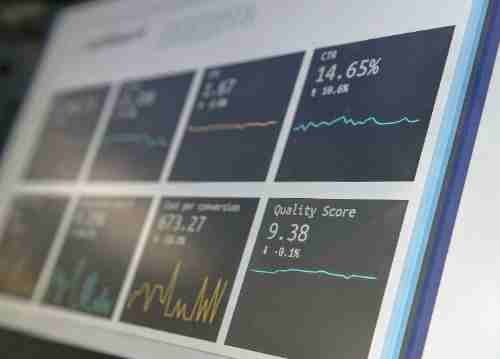
Table of Contents
- Understanding Robotics
- Key Components of Robots
- Sensors
- Actuators
- Control Systems
- Power Supply
- Key Components of Robots
- How Robotics is Helping Us in Healthcare
- Surgical Robots
- Robotic Prosthetics
- Rehabilitation Robotics
- Robotic Nurses and Assistants
- Robotics in Manufacturing
- Automated Assembly Lines
- Packaging and Sorting
- Inspection and Quality Control
- Robotics in Space Exploration
- Robotic Rovers
- Space Telescopes
- Satellite Repairs
- Robotics in Agriculture
- Autonomous Tractors
- Robotic Harvesters
- Drones for Crop Monitoring
- Weed Control
- Robotics in Daily Life
- Robotic Vacuum Cleaners
- Personal Robots
- Entertainment Robots
- The Future of Robotics
- Human-Robot Collaboration
- Robots in Education
- AI-Powered Healthcare
Engineering, computer science, and artificial intelligence (AI) are all used in the quickly developing field of robotics to build machines that can carry out activities either fully or partially on their own.
Robotics is becoming more and more significant in many industries and daily life, from industrial robots on assembly lines to robotic surgery helpers in hospitals. This article will discuss the definition of robotics, its uses, and the creative and useful ways it is advancing humankind.
Introduction: The Rise of Robotics
The design, building, use, and operation of robots is referred to as robotics. Robots are programmable devices that can do activities without the need for human assistance. They frequently outperform humans in complex or repetitive tasks in terms of accuracy and efficiency. Although the word “robot” may conjure images of humanoid machines from science fiction, there are many different types of robots in the actual world, ranging from drones used in agriculture to robotic arms in industries.
As robotics technology has developed, its application has broadened, and it is currently assisting in the resolution of issues in a variety of sectors, including industry, healthcare, transportation, and even space exploration.
1: Understanding Robotics
To appreciate how robotics is helping us, it’s important to understand the basic components and technologies that make robots function. Here are the key elements:
Sensors: Robots use sensors to perceive their environment, detect obstacles, and gather data. These sensors can include cameras, infrared sensors, and motion detectors, allowing robots to interact with the world around them.
Actuators: Actuators are the “muscles” of a robot. They convert energy into movement, enabling the robot to perform physical actions, such as lifting objects or moving across surfaces.
Control Systems: A robot’s brain, the control system, processes information from sensors and makes decisions. It can be programmed or controlled via artificial intelligence to carry out specific tasks.
Power Supply: Robots require a power source, such as electricity, batteries, or hydraulic systems, to function for extended periods.
These components work together to create machines capable of completing tasks that would otherwise be difficult, dangerous, or time-consuming for humans.
2: How Robotics is Helping Us in Healthcare
In healthcare, robotics is making a profound impact by enhancing the precision, safety, and efficiency of medical procedures.
Surgical Robots: Robots like the Da Vinci Surgical System are used in minimally invasive surgeries, allowing surgeons to perform delicate procedures with greater precision and smaller incisions, reducing recovery times for patients.
Robotic Prosthetics: Advanced prosthetic limbs equipped with robotics allow for more natural movement, improving the quality of life for amputees. These prosthetics can be controlled via sensors and respond to the user’s movements.
Rehabilitation Robotics: Robots assist patients in physical therapy by guiding their movements, aiding recovery after injury or surgery. They can also help those with disabilities regain mobility.
Robotic Nurses and Assistants: Robots in healthcare are also used to deliver medications, monitor patient vitals, and even assist with routine tasks, improving efficiency in hospitals and care facilities.
The integration of robotics in healthcare is not only increasing the accuracy of treatments but also making healthcare more accessible and personalized.
3: Robotics in Manufacturing
The use of robotics in manufacturing has transformed industries by enhancing productivity, reducing human error, and improving safety.
Automated Assembly Lines: Robots are employed in industries like automotive manufacturing to assemble parts with high precision and speed. This reduces production time and the risk of defects.
Packaging and Sorting: Robotics systems are used for sorting, packing, and labeling products in warehouses and distribution centers, speeding up the process and reducing costs.
Inspection and Quality Control: Robots equipped with sensors and cameras are used to inspect products for defects, ensuring higher standards of quality control with minimal human intervention.
By automating repetitive tasks, robots help companies improve efficiency, reduce costs, and maintain high levels of precision in production.
4: Robotics in Space Exploration
Robotics is playing a key role in space exploration, enabling humans to explore distant planets and conduct experiments in space without the need for astronauts to be physically present.
Rovers: Robotic rovers like NASA’s Perseverance are exploring the surface of Mars, gathering data, and searching for signs of past life. These rovers are equipped with cameras, drills, and instruments that allow them to conduct experiments remotely.
Space Telescopes: Robotic spacecraft like the Hubble Space Telescope help scientists study the universe by capturing high-resolution images of distant galaxies, stars, and planets.
Satellite Repairs: Robots are also used to repair and maintain satellites in space, which is crucial for the functionality of communication and weather-monitoring systems.
Robotics makes space exploration safer, more cost-effective, and more far-reaching, opening new possibilities for scientific discovery.
5: Robotics in Agriculture
Robotics is transforming agriculture by automating tasks like planting, harvesting, and monitoring crop health, helping farmers produce more food with fewer resources.
Autonomous Tractors: AI-driven tractors can plow fields, plant seeds, and even apply fertilizers or pesticides autonomously, reducing the need for human labor and increasing efficiency.
Robotic Harvesters: Robots designed to pick fruits and vegetables can work longer hours than humans, helping to address labor shortages and ensuring that crops are harvested at the optimal time.
Drones for Crop Monitoring: Drones equipped with AI and sensors can fly over fields, collecting data on soil health, crop growth, and pest activity. This data helps farmers make informed decisions and increase crop yields.
Weed Control: Robotics systems are being developed to detect and remove weeds with precision, reducing the need for harmful pesticides.
By automating labor-intensive tasks, robotics is helping farmers increase productivity while minimizing environmental impact.
6: Robotics in Daily Life
Robotics is not limited to industrial and scientific applications; it is increasingly becoming a part of our everyday lives, offering convenience and enhancing our experiences.
Robotic Vacuum Cleaners: Devices like Roomba have become household staples, autonomously cleaning floors and navigating obstacles, freeing up time for homeowners.
Personal Robots: Robots like SoftBank’s Pepper and Toyota’s Kirobo are designed to interact with humans, providing companionship, assistance, and even entertainment.
Entertainment Robots: Robotics is also used in theme parks and entertainment, where animatronic characters or robots are used for storytelling and attractions, enhancing the visitor experience.
These consumer-facing robots are designed to simplify tasks, provide companionship, and enhance leisure activities, improving the quality of everyday life.
7: The Future of Robotics
The field of robotics continues to evolve, and as technology advances, the role of robots in our lives will expand. Future robotics may feature greater autonomy, more sophisticated AI, and increased collaboration between humans and robots.
Human-Robot Collaboration: Future robots will work alongside humans in more collaborative roles, assisting with complex tasks that require both human creativity and robotic precision.
Robots in Education: Robots could serve as teaching assistants, providing personalized learning experiences and supporting teachers in the classroom.
AI-Powered Healthcare: In the future, robots may play a more prominent role in preventive healthcare by monitoring vital signs and offering real-time diagnostics.
With rapid advancements in AI, machine learning, and materials science, robotics will likely become an even more integral part of our world, offering new opportunities and solutions to everyday challenges.
The Growing Importance of Robotics
We already benefit from the powerful and revolutionary technology of robotics in many facets of our lives. Robots are improving productivity, safety, and accuracy in a variety of fields, including healthcare, manufacturing, space exploration, agriculture, and even our homes. Robotics has the ability to significantly improve our lives and address some of the most pressing issues facing the globe as technology develops.
Robotics is significantly influencing the future in a number of ways, including bettering healthcare outcomes, streamlining production procedures, and opening up new avenues for creativity. Adopting this technology will continue to yield new advantages and move our world closer to automation and connectivity.





